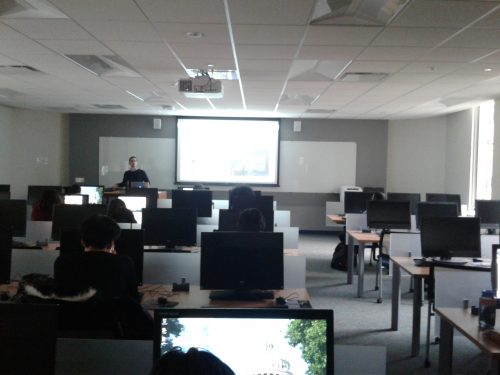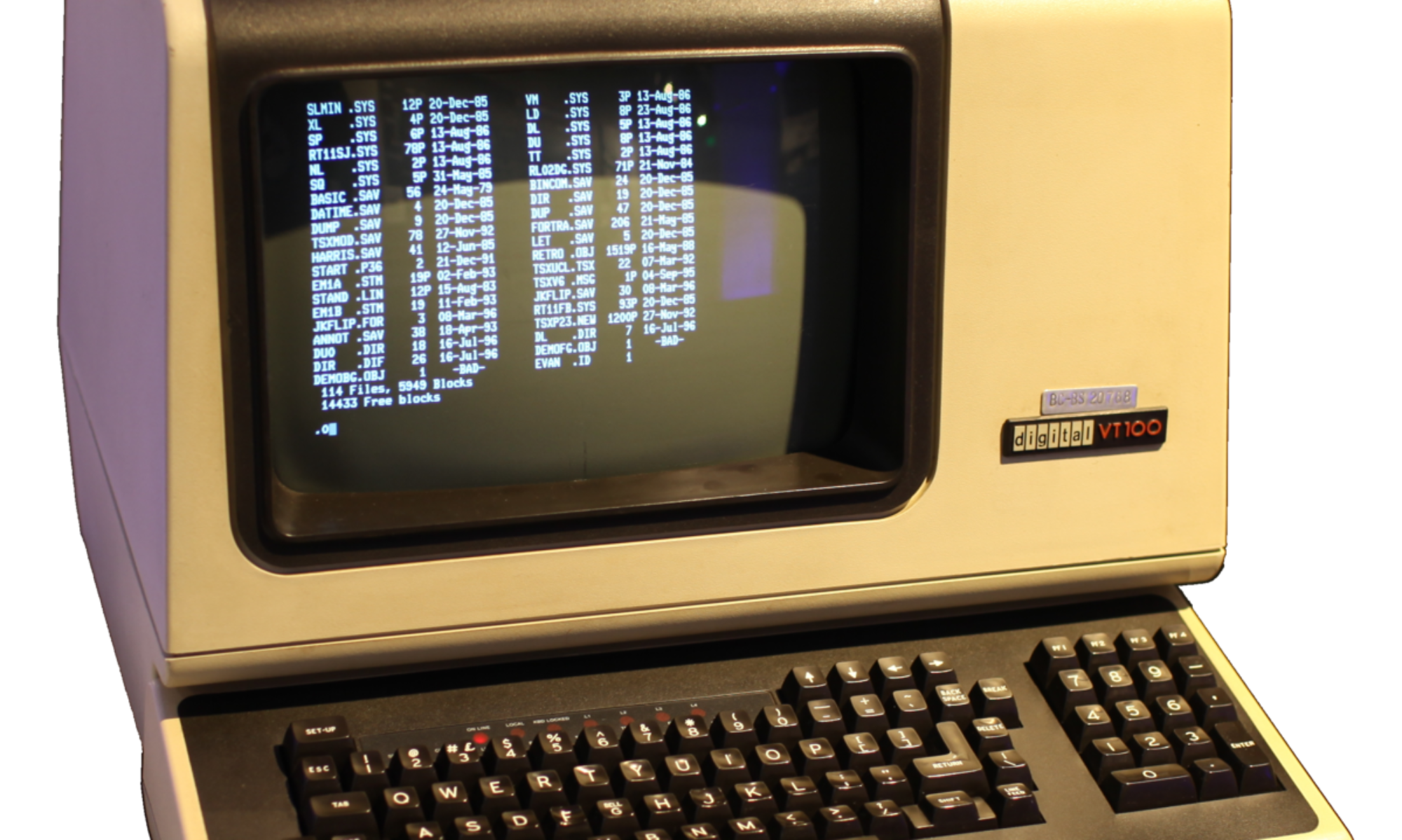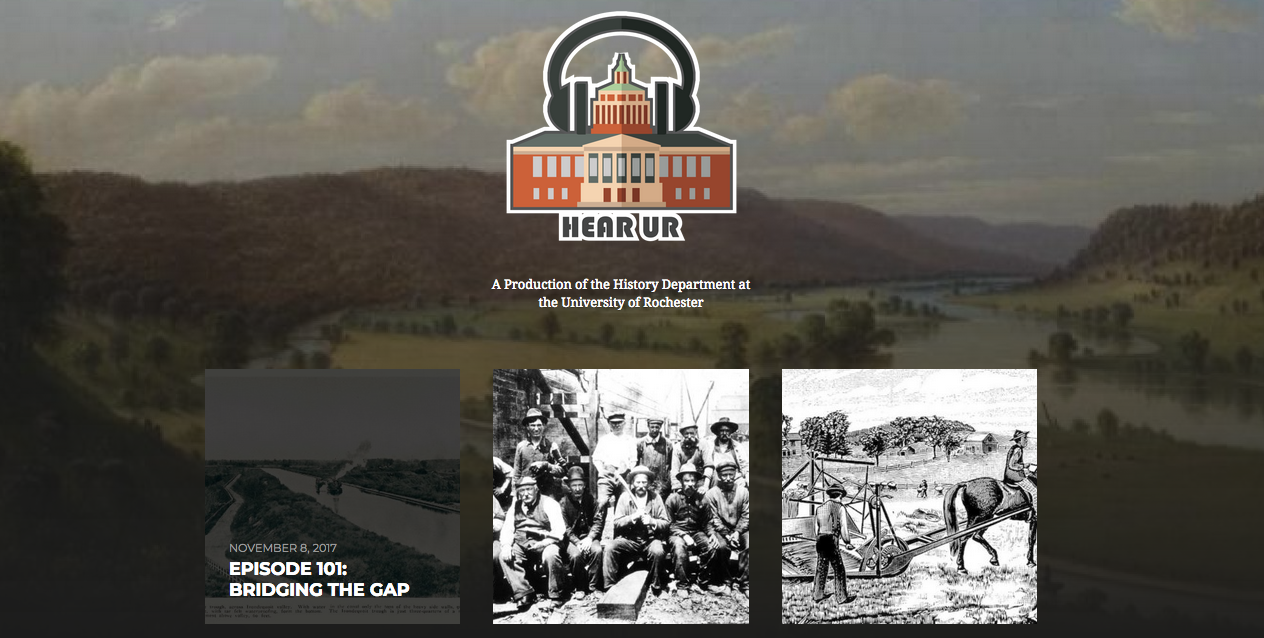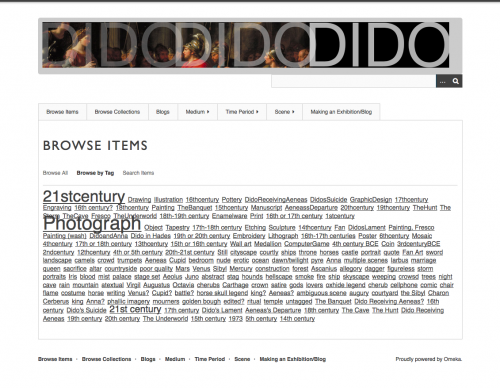
As part of the Andrew Mellon Fellowship, fellows are required to undertake teaching assistantships in fields related to the Digital Humanities. The University of Rochester’s Digital Media Studies Program has a close association with the Mellon Program, and many previous fellows have served as Teaching Assistants for its courses. This semester, I, along with my colleague Oishani Sengupta, have been assisting with DMS103, a broad introduction to various forms, functions and applications of major forms of digital media designed to give incoming majors a solid foundational understanding of the field. The course consists of five sections covering photography, video, graphic design, 3D object design, and augmented and virtual reality.
As an historian, it was not without trepidation that I took on this role. My own experience with digital media tools has been largely autodidactic experimentation and some of the areas covered by the course, particularly the virtual and augmented reality section covered digital media formats with which I had very little direct experience. Thus, the assignment has certainly fulfilled the Mellon Program’s commitment to pushing fellows out of their comfort zone and into novel and challenging territory. In order to effectively teach in DMS103, I was obligated to learn. I found myself doing plenty of independent research on the finer points of Adobe Photoshop toolbars and Blender optimisation techniques, and often student’s specific problems provided valuable opportunities to master particularly tricky or obscure features of a piece of software.
At the same time, however, the teaching experience was also a profound learning experience that led me to reevaluate the potential role of digital media in my work as an historian. I often found myself considering ways that some digital media technologies, some of them still emerging, could be applied in teaching history, in classrooms and in public settings. More comfortable with musty manuscripts and the printed word than with visual media, historians could stand to benefit from integrating them more dynamically and creatively into their lessons than as ancillary elements in slide shows. In particular, the potential of virtual and augmented reality to bring history to students and members of the public is an exciting prospect. One can, for instance, imagine the transformation of public spaces into augmented teaching spaces through software which takes advantage of ubiquitous smart phone technology.
Of course, integrating digital media more meaningfully into history as a discipline also requires historians to obtain a degree of expertise in the software that powers them. Over the course of the semester, tackling problems side-by-side with students and the other DMS103 teaching staff, I have learned that this is a daunting, but also very rewarding process, and by no means an insurmountable one for the resourceful scholar. I now look towards digital media formats as a teaching opportunity rather than an intimidating barrier, and am excited to devise ways to integrate it into lessons on history, which is, perhaps the largest lesson of this teaching experience!
James S. Rankine is a 2017-2018 Andrew Mellon Fellow and PhD Candidate in the Department of History.



